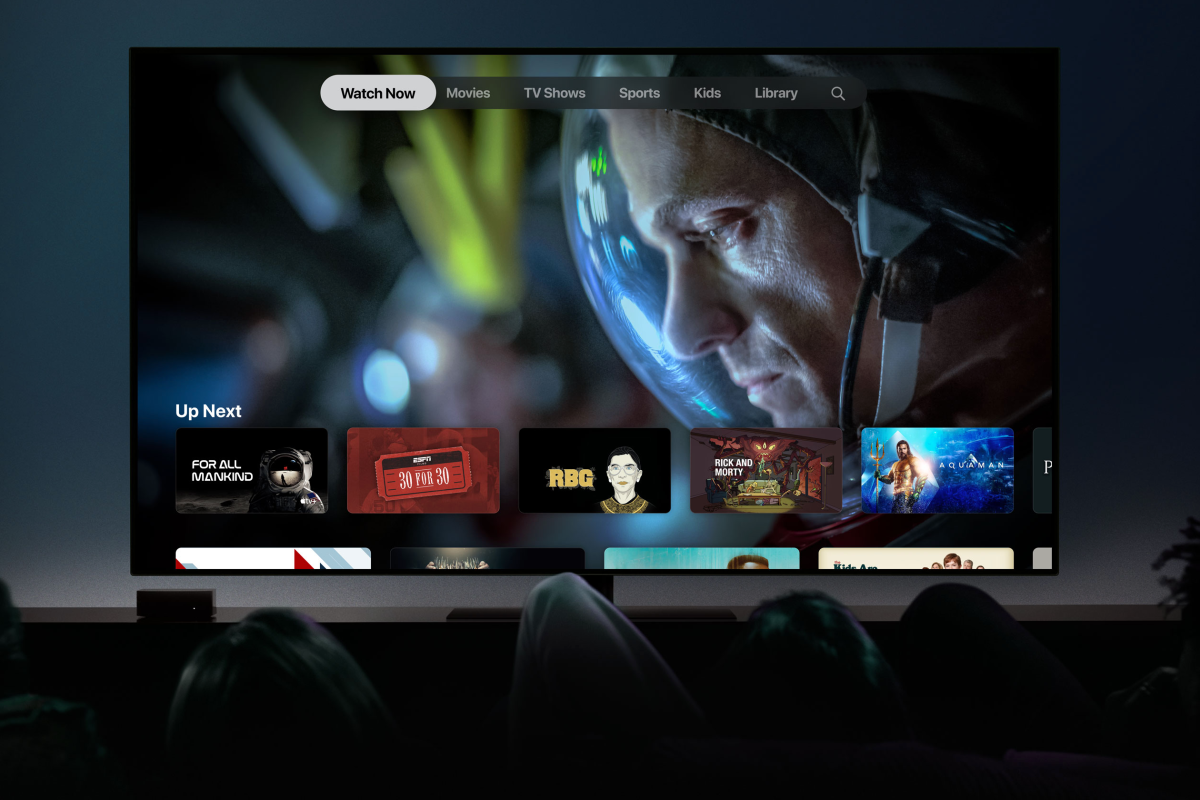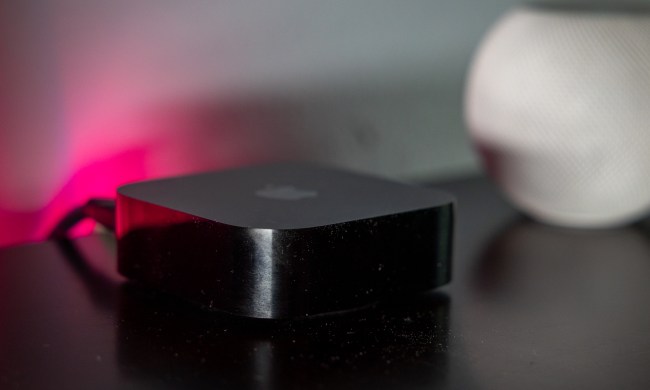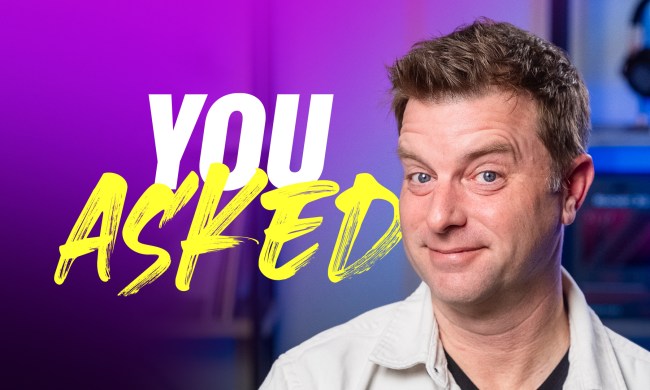Apple’s “hobby,” the Apple TV streaming media set-top box, is sitting at just 2% of the global streaming media device market, something that should be sending shockwaves through Apple’s senior management team. And that number doesn’t take into account the fact that Google just launched its incredibly affordable $50 Chromecast with Google TV, a streaming media device that can do almost everything an Apple TV can do, at a fraction of the price.
At the same time as competitors like Google, Roku, and Amazon are increasing the pressure on Apple TV with ever-more capable and inexpensive add-on devices, smart TVs are eroding Apple’s presence from the other side of the market by offering vastly better built-in operating systems like Android TV (which no longer sucks) and Roku OS.
Does this mean the end of the line for Apple TV, as it finds itself in the awkward position of being the most expensive device of its kind, in a world where fewer and fewer people need a device like the Apple TV in the first place? We think it’s possible.
If Apple’s little black box is to not only survive but also thrive, here’s a list of the challenges it must overcome.
Price
When Apple debuted the Apple TV 4K in 2017, it instantly became one of the most expensive streaming devices you could buy. At $180 for the 32GB version and $200 for the 64GB model, the only other media streamer that comes close to those prices is Nvidia’s $200 2019 Shield TV Pro.
Even the Apple TV HD, which doesn’t support 4K resolution, HDR formats such as Dolby Vision, or advanced audio like Dolby Atmos, is $150, making it the most expensive non-4K streamer you can buy.

Apple has always been able to charge a premium for its products when compared to the competition, but as we’ll see in a moment, it’s harder than ever for Apple to justify the price premium it asks for the Apple TV.
“While Apple TV continues to lead the industry in quality of the viewing experience,” Bill Demas, CEO of streaming analytics firm Conviva, told Digital Trends, “it has been unable to gain significant market share among connected TV devices with just 22% year over year growth in Q2 2020 to decline to 8.7% share of global viewing time. Its higher price point ($140+) is most likely the biggest barrier to its growth as consumers can purchase a Roku stick for roughly a quarter of the cost.”
Audio and video
For a brief time, the Apple TV 4K was one of just a handful of devices that could support Dolby Vision, which in part helped justify its high price for videophiles looking for the best possible HDR picture quality. But since 2017, Dolby Vision has been added to both 2019 Shield TV models, the $50 Amazon Fire TV Stick 4K, the $120 Fire TV Cube, the $100 2020 Roku Ultra, and the two newest Android TV devices, the $50 TiVo Stream 4K and $50 Chromecast with Google TV.
In 2018, Apple added Dolby Atmos decoding to the Apple TV 4K, once again positioning the device as the streamer of choice for those who wanted the best. Other devices like the 2017 Shield TV and Roku Streaming Stick+ were also Atmos-capable, but they didn’t decode Dolby’s 3D audio format. Instead, they pass it along to a TV, soundbar, or A/V receiver. That’s a good way to avoid paying Dolby a license for Atmos, but it also meant that Netflix prevented these devices from receiving Dolby Atmos soundtracks.
Full Dolby Atmos support remained a premium feature for a while, with only the 2019 Shield TV, Fire TV Cube, and Apple TV 4K sanctioned by Netflix for the format. But in September, the $50 Chromecast with Google TV changed the landscape: It doesn’t decode Dolby Atmos, but Netflix nonetheless supports the format on Google’s streamer.
The Apple TV 4K remains one of the only ways you can experience Dolby Atmos Music (via the Tidal app), but it’s unclear how many people are willing to sit in front of their TVs just to listen to music.
Streaming services and content discovery
Apple TV has always enjoyed strong support from streaming content providers such as Amazon, Netflix, Disney+, Hulu, and others. Just last week, the Apple TV 4K added the ability to stream 4K videos from YouTube. But increasingly, being able to access specific streaming services is no longer something one platform can claim to be better at than the others. With the glut of streaming services available, today, it’s all about curating that content and making personalized recommendations in a single, easy user experience.

When Apple debuted tvOS 13, it added the Apple TV app, a bold attempt to realize Steve Jobs’ ambition of solving the TV problem. Part interactive home screen and part promotional vehicle for Apple’s own Apple TV+ streaming service, it’s a good way to see all of your content options in one place. But the Apple TV app isn’t alone.
The Amazon Fire TV interface is essentially the same concept, though heavily weighted toward Amazon’s Prime Video content. The Roku Channel brings together a wealth of free content from select Roku channels and lets you supplement this with premium subscription content too. And most recently, Google TV, the default home screen experience on the new Chromecast, is the closest thing yet to the Apple TV app.
AirPlay 2
For Apple device owners, one big advantage of owning an Apple TV is its built-in AirPlay 2 technology. With AirPlay 2, you can send virtually any content from your iPhone, iPad, or Mac to your TV in just a few taps. Screen sharing is also included, making it possible to show the device’s entire display on the big(ger) screen.
But AirPlay 2 is no longer an Apple TV exclusive. In recent months, Apple has been rolling it out to select smart TVs and streaming media devices (along with its Apple TV app, Apple TV+, and HomeKit). TVs from Samsung, LG, and Sony already have it, and when Roku releases its Roku OS 9.4 software, AirPlay 2 will be added to all of its 4K devices except the Roku 4.
This strategy is good news for Apple device owners who don’t want to buy an Apple TV, and even better news for people who have been resisting buying an Apple device, but it’s one more reason why the Apple TV is in danger.
Gaming
Not long ago, it looked like Apple Arcade might breathe new life into the Apple TV. Casual gaming apps for Apple TV had proven moderately successful, and they had always been a big part of life on iPhones and iPads. Apple Arcade, with its flat monthly fee for all-you-can-stream gaming across all of its devices including Apple TV, looked like an obvious way to expand gaming on that device.
Unfortunately, less than one year after its launch, Apple Arcade is struggling to make a lasting connection with gamers. In July, it adjusted its approach to what kind of games it would offer, putting a greater emphasis on titles that promote engagement (read: Repeat and regular usage). But as Digital Trends senior editor Matt Smith points out, this is a very different mission than the one that defined Apple Arcade’s launch message: High-quality, innovative games.
Some have speculated that Apple intends to give the next Apple TV an even more powerful processor than the current A10x, something that could further enhance what game developers can do with the Arcade platform. But more power would put the Apple TV in closer competition with consoles like the Nintendo Switch while doing nothing to advance its new engagement-oriented Arcade strategy.
Meanwhile, the new Chromecast with Google TV will receive Google Stadia support in 2021, and Amazon’s new Luna gaming service will work with all but one of its current lineup of Fire TV devices.
Smart TVs are getting smarter
“As more consumers upgrade to smart TVs with built-in streaming capabilities,” Demas said, “we expect the connected TV device category — especially the devices with lower market penetration like Apple TV — to feel the pinch.”
In what may simply be a case of “if you can’t beat ’em, join ’em,” Apple seems intent on bolstering smart TVs with capabilities that drastically diminish the appeal of an Apple TV. In addition to AirPlay 2, which we mentioned above, many new TVs will be getting the Apple TV app and Apple’s HomeKit smart home platform.
The Apple TV app and even Apple TV+ are understandable additions to smart TVs — it’s no different than Apple making iTunes (and now Apple Music) available on a variety of non-Apple platforms and devices. But HomeKit is a bit of a head-scratcher.
In its launch of tvOS 14, Apple used the Apple TV 4K as a poster child for the ways in which the device can be used as a smart home hub. From letting you control smart scenes with Siri, to picture-in-picture presentations of doorbell cam video, HomeKit’s home is Apple TV. Except that now it’s going to be at home on many more devices and TVs.
Is it the end for Apple TV?
No. At least, not yet.
According to Strategy Analytics, Apple TV accounted for an estimated 6% of media streaming devices sold in the U.S. in the second quarter of 2020. That’s not a big number, especially when compared to Roku’s 32% for the same period. However, Apple has always said it’s not interested in necessarily being the biggest seller of a given product — especially if to do so would mean taking a lower profit margin. Its continued support of the iPod Touch is proof that even a niche product line still has a home in Cupertino.
But just like the original line of iPods, the Apple TV will eventually have to face the fact that its time is at an end, and for many of the same reasons. Much of what it does can be done by other devices for far less money. Just like the iPhone inherited all of the iPod’s features, so too are smart TVs inheriting many of the Apple TV’s features. And as much as Apple would like to put a dent in the gaming fortunes of Sony, Microsoft, and Nintendo, the Apple TV doesn’t appear to be winning gamers’ hearts and minds.

So if the Apple TV is too expensive and doesn’t offer enough to differentiate itself from streaming devices and smart TVs, what happens next?
If the streaming device market has essentially become commoditized due to the influx of super-capable $50 streamers, perhaps it’s time that Apple played ball. It could easily reach back into its chip archives and grab a less powerful (but still 4K-capable) processor and put inside a stick or dongle-like device. That “Apple TV Mini” could ship with the existing Siri touchpad remote, or, given that people don’t appear to be enamored with it, it could ship with a new version of the original aluminum remote, but upgraded with a voice button.
Such a device would likely still be more expensive than the current batch of $50 streamers, but if it can come in between $50 and $100, Apple could probably keep itself in the streaming game for a long time to come.



